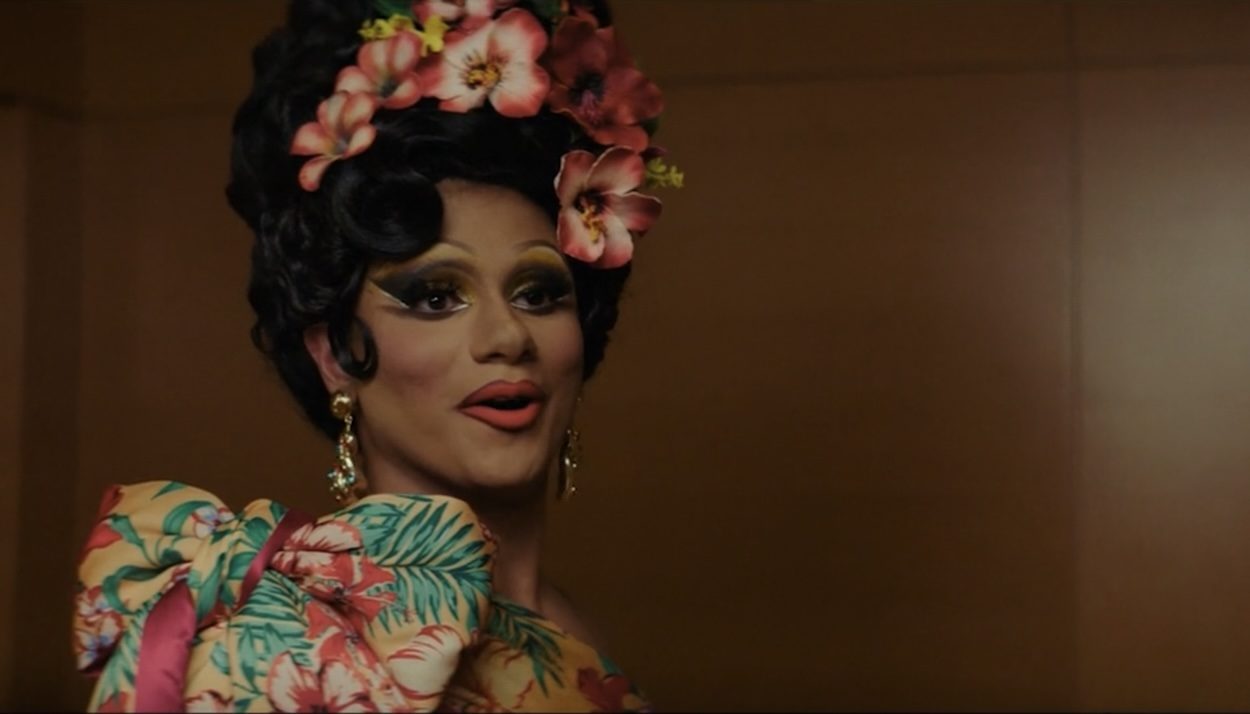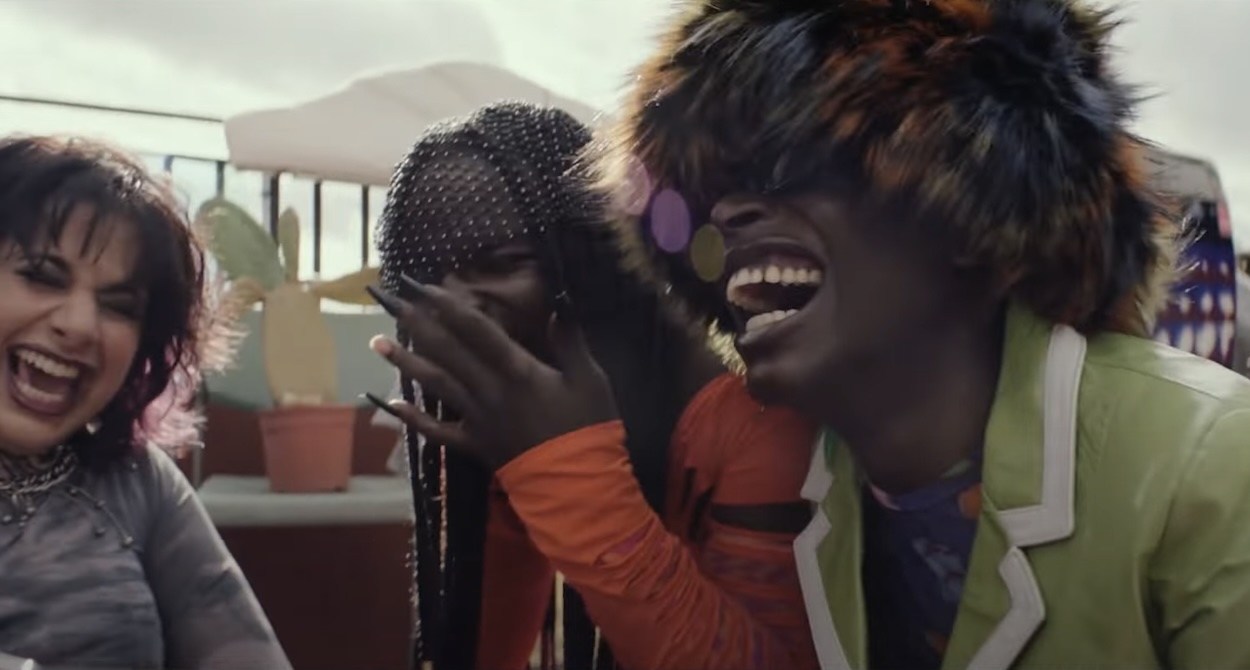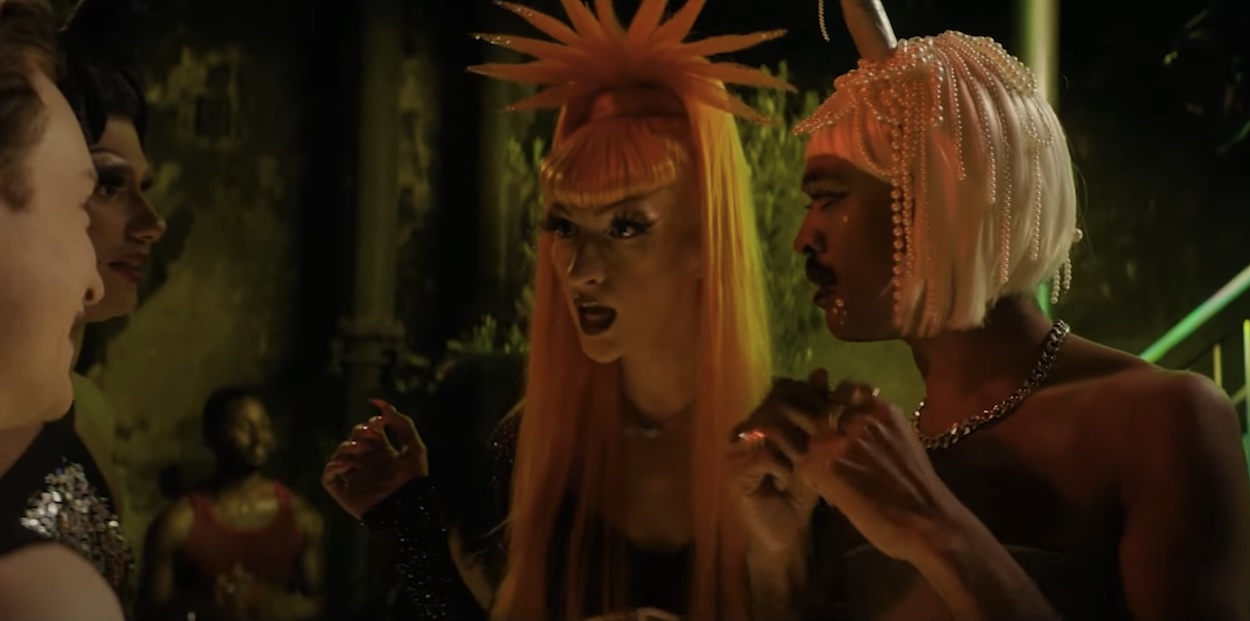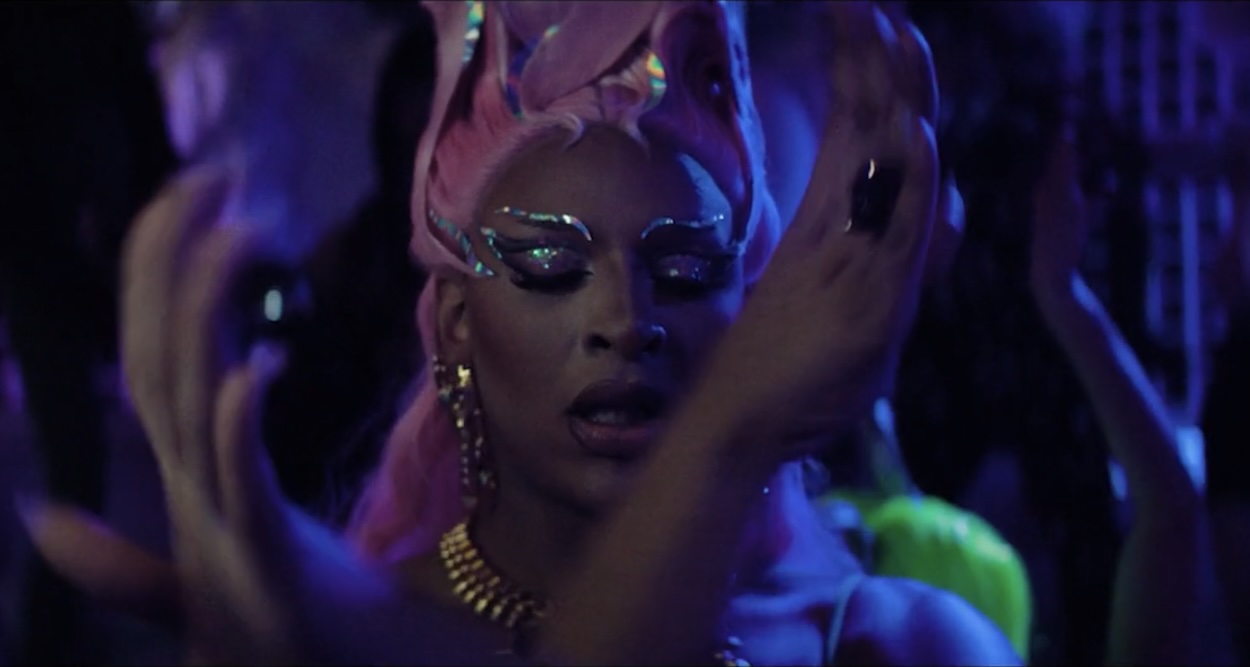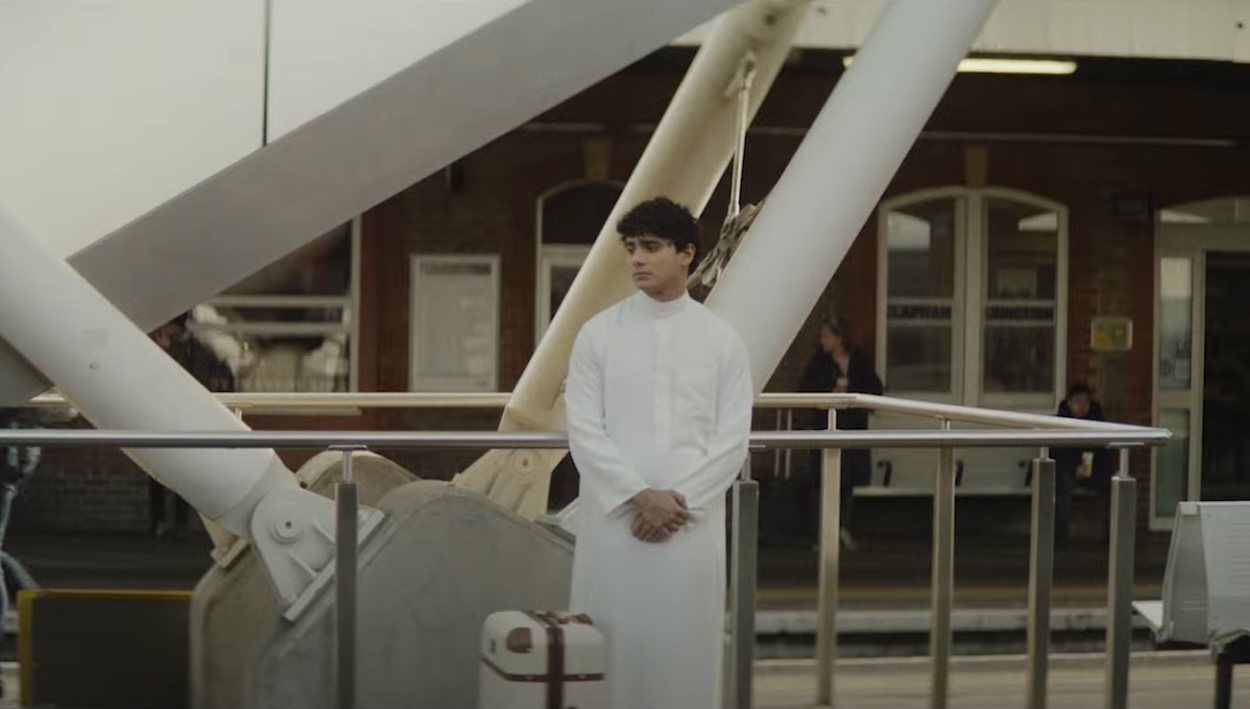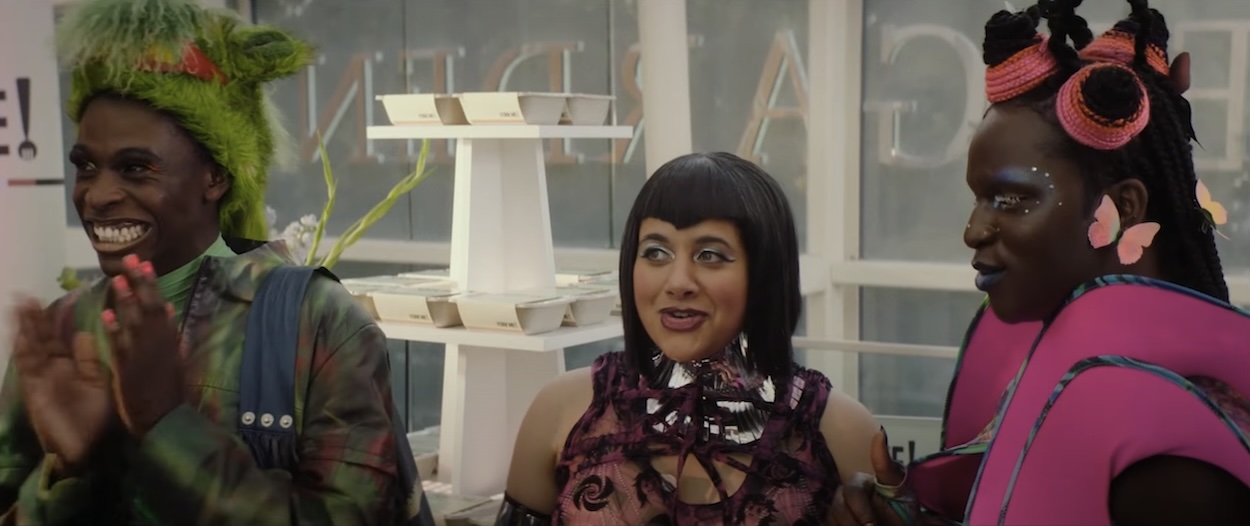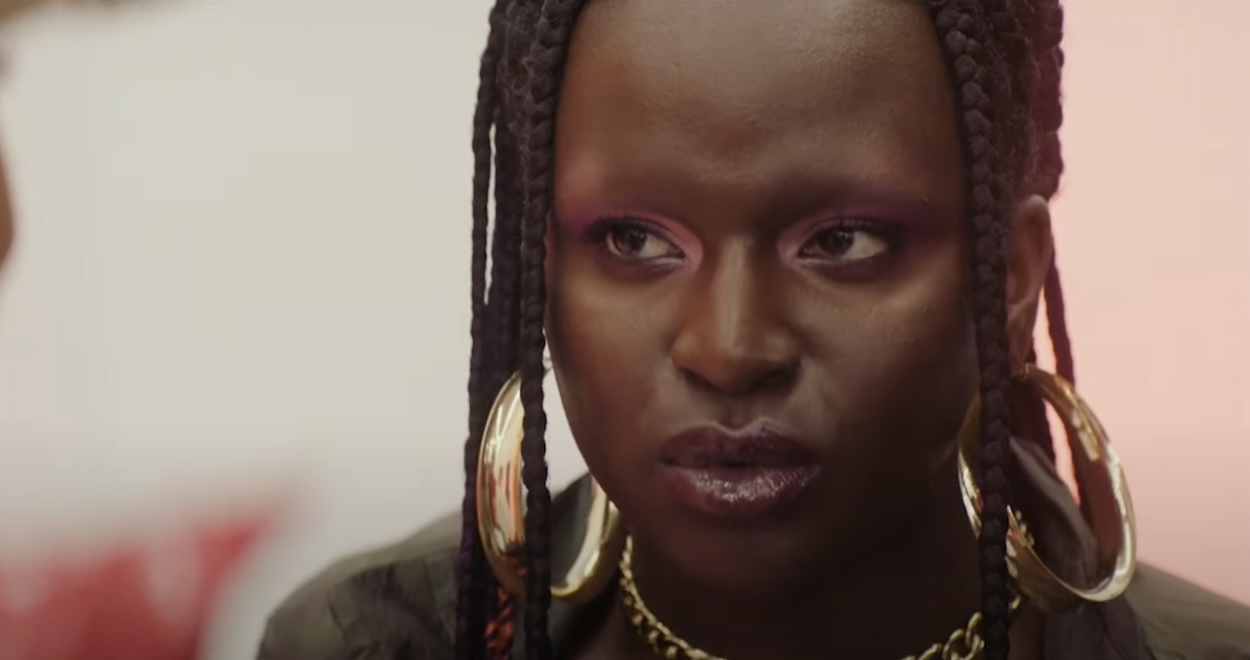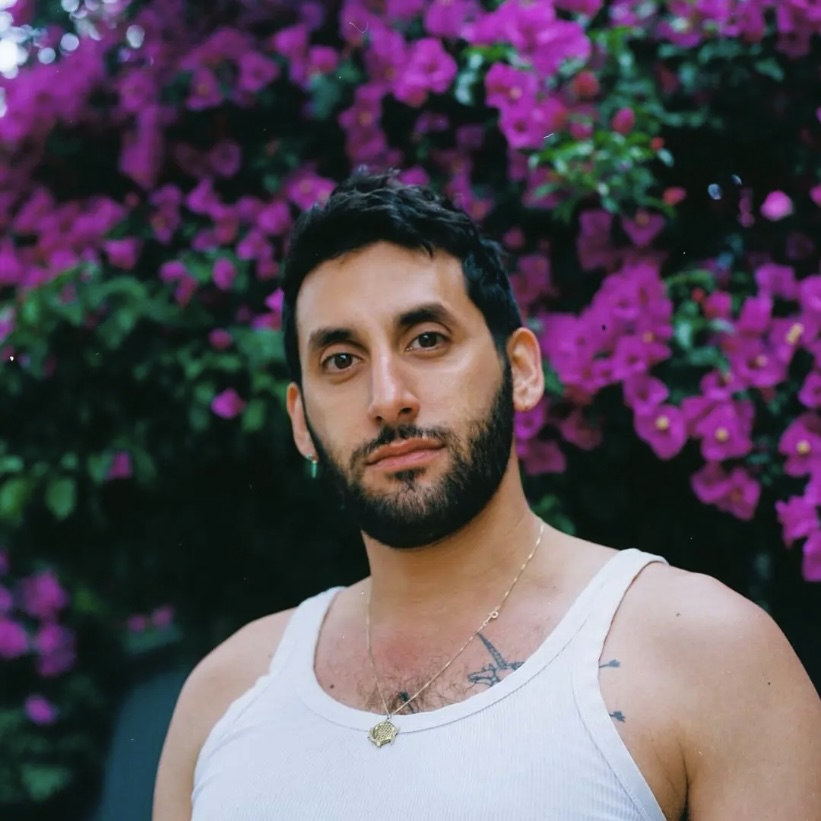Amrou Al-Kadhi:
We pitched this film six years ago and shot it two years ago. Honestly, I was in a much more hopeful place about the world back then. The idea was to create a film about queer Arab joy because so much of our representation is tied to trauma narratives—stories where we’re either villains or victims. I wanted to tell a queer Arab story that was unapologetically optimistic, messy, complicated, and abundant.
There’s this media narrative that queerness and being Arab or Muslim are incompatible, and it’s often used by the West to justify the oppression of Arab lives. I thought it was important to remind people that queer Arab intersections are rich with abundance, beauty, and surprise. And, on a simple level, the world seems to forget that Arabs are human—capable of love, hope, and dreams. With Layla, I wanted global audiences to see a queer Arab character living a messy, contradictory, and joyful existence.
Six years after pitching the film, I see now just how rare and sacred queer Arab joy—any Arab joy—has become. I’m deeply aware of my privilege as an Arab creator in London, especially as so many Arabs are being denied the chance to tell their stories. Everyone involved in Layla stands firmly for a ceasefire in Gaza. This film is my love letter to drag queens. Drag queens can take a simple piece of fabric and make it look couture, and that’s the spirit of Layla. With limited resources, we created a queer fantasy that celebrates making something extraordinary out of the ordinary. Drag teaches us to look at the world with hope and reinvention, which is what this film aims to do.
The queer experience is gloriously messy—one moment you’re in high drag, the next you’re at a chemsex party, crying alone, praying at a mosque, and then back at a drag show. I wanted to capture that absurdity and joy.
Shon Faye:
I want to start with the central character and performance. There are autobiographical overlaps between you and Layla (Bilal Hasna). Layla is an Arab nonbinary drag queen—there’s the elephant in the room. I’ve joked Bilal has more self-respect than you! Can you talk about how the character came about?
Amrou:
Thanks for that. You’re right—I had little self-respect at the start. In the first draft, Layla died in the first 10 minutes. I was in a dark place. When writing Layla, I drew from my experience of adapting to survive—being different versions of myself in different spaces. Friends often commented on how I’d change depending on the situation. That constant self-modification is a trauma response.
Layla mirrors that contradiction: hyper-confident on stage but emotionally closed in relationships and with family. I wanted the audience to piece together who they are, not have it handed to them. It’s messy, like real life.
Shon:
What struck me is that Layla isn’t a “perfect victim.” They’re chaotic and even cruel, like in their relationship with their sister. My take is they compartmentalize out of habit, telling lies as a survival mechanism. Over time, they struggle to untangle lies from truth.
Amrou:
Exactly. Many queer people of color live with that compartmentalization—it becomes second nature. Layla’s actions reflect this. I didn’t want them to be a weak, victimized drag queen who’s saved by a dominant love interest. Instead, Layla is an agent of their own chaos.
For example, with Max, Layla self-fetishes to please him, not because Max demands it, but because Layla has internalized the need to fit a certain narrative. Queer films often depict things happening to queer people, but life isn’t like that—Layla drives their own story, mess and all.
Shon:
The film’s tone is a medley—comedy, drama, tragicomedy. It feels inherently queer. Was this intentional?
Amrou:
Yes. We debated the tone during scripting—“Is it a rom-com? A coming-of-age story? A drama?” But as a drag queen, I’m used to borrowing from everywhere, reshaping it into something new. That’s the queer way: code-switching and adapting.
Layla’s shifting identity mirrors the film’s shifting tone—it’s tacky, camp, messy, and heartfelt all at once. Drag reclaims culture, and the film pays homage to that tradition.
Shon:
The depiction of “home” is fascinating. Layla moves between spaces—family, friends, Max’s flat—and ultimately returns to the chosen family. The visuals highlight this search for belonging.
Amrou:
We approached each space like a drag interpretation of “home.” Max’s flat, for example, is what a drag queen imagines a cis white guy’s flat looks like—polished but exaggerated.
The final space blends a mosque’s design with a queer lens, symbolizing integration. For people like Layla, home isn’t physical—it’s internal. The exaggerated settings highlight how physical spaces can’t fully embody “home.”
Shon:
The casting is extraordinary. It captures modern queer London, particularly the black and brown-led subcultures. How did you construct this world?
Amrou:
We cast actors, friends, and people we met in clubs and on Instagram. For example, I met Darkwah, who plays Lucilla, at a nightclub. The film also creates spaces, like the club Feathers, that we wish existed in London—a place solely for queer POC.
Shon:
Let’s talk about Max. He’s complex—not a one-note villain. He feels lost, perhaps envious of Layla’s freedom. How did you develop his character?
Amrou:
Initially, Max was a stereotypical jock, but it flattened the story. We wanted nuance. Louie (who plays Max) brought a gentleness, making their relationship dynamic more believable. Max isn’t toxic—he’s trying to understand Layla, but Layla’s self-deception complicates things.
Shon:
The film retains a bold approach to queer sexuality. One standout moment was Max’s attraction to Layla’s femininity, symbolized in the shoe scene. Was this about reclaiming femininity?
Amrou:
Partly. That scene is about Layla embracing suppressed femininity. Queer cinema often shies away from portraying drag queens or femmes having hot, empowering sex. I wanted to change that narrative.
Audience Question:
The costumes were spectacular. How did you work with designer Cobbie Yates to use them in storytelling?
Amrou:
Cobbie is amazing. Drag is about creating fantasy from limited resources, and the costumes reflect that—campy, inventive, and exaggerated. Each outfit feels like a drag interpretation of the character.
Audience Question:
What inspired the octopus metaphor?
Amrou:
I love octopuses—they camouflage, code-switch, and manage multiple tentacles wrestling yet working together. They symbolise Layla’s struggle to integrate their many identities while thriving in their contradictions.
Amrou Al-Kadhi
INFO:
Layla opens in UK cinemas today
See Amrou’s showreel at Knucklehead here
@glamrou
@shon.faye
